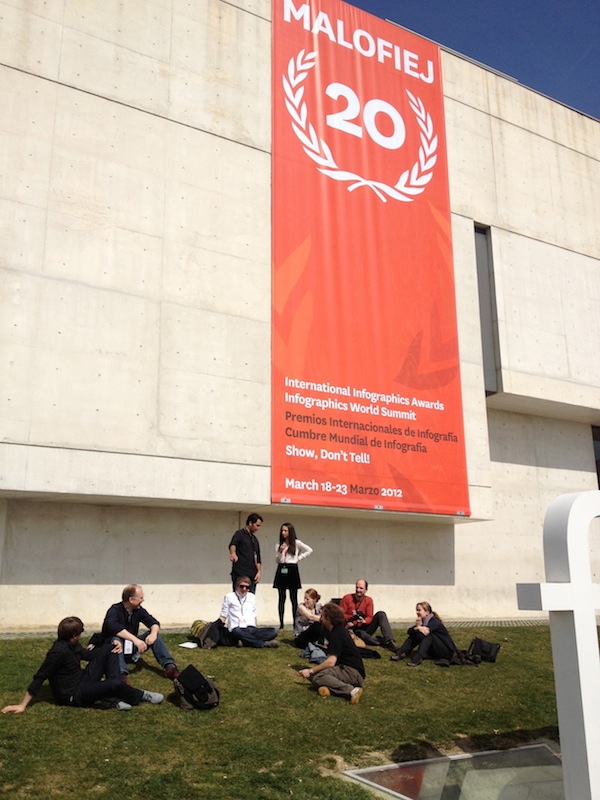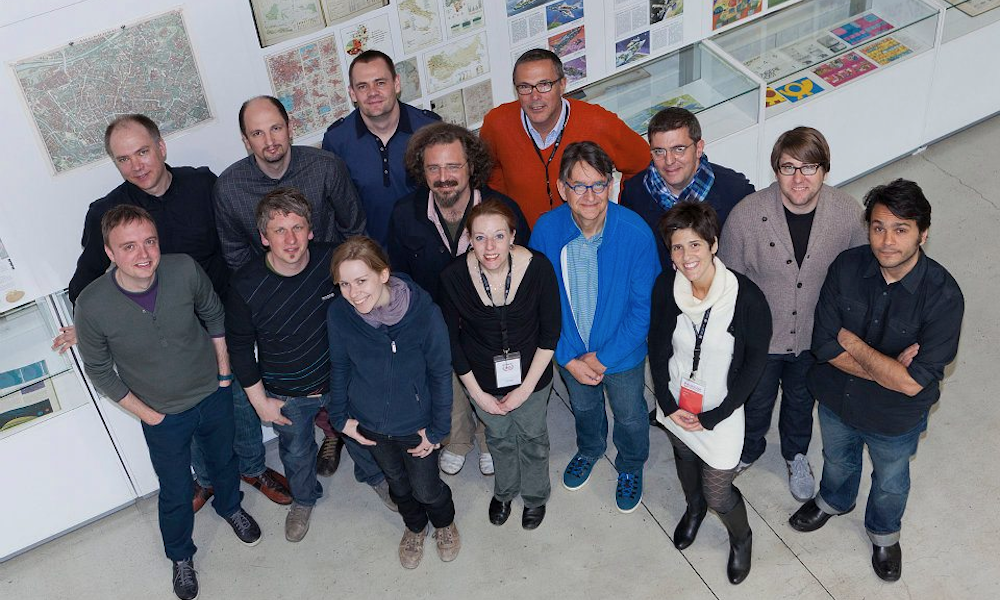As the occasionally elusive Pamplonan sun sets on Malofiej 20, I wanted to share my experiences of these past seven days which have formed the best week of my professional life to date.
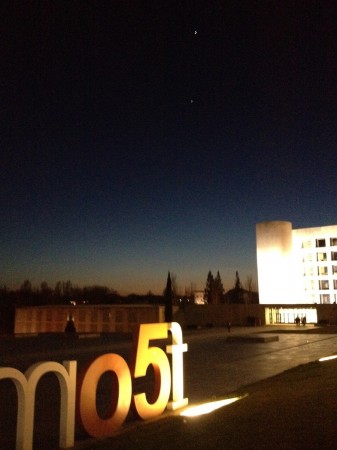
What is Malofiej?
For those of you reading who are unaware of Malofiej, it is the premier gathering for the world’s newspaper and magazine infographic artists and a celebration of their work.
The event is held in Pamplona, northern Spain at the School of Communication of the University of Navarra. It runs from a Sunday through to a Friday every March. This year was the 20th anniversary of the event, established in recognition of the Argentinian infographic pioneer Alejandro Malofiej.

The event comprises three elements – the Malofiej awards judging process runs alongside the ‘Show, Don’t Tell’ workshop and then, on Wednesday evening, the World Infographics Summit commences.
The ‘Show, Don’t Tell’ workshop is a two-day workshop for students or young professionals to fine-tune their craft through a hands-on coaching session from some of the most esteemed information graphic experts in the field, namely John Grimwade, Juan Velasco, Geoff McGhee and Alberto Cairo. I had no involvement in the event so won’t offer any reflections other than to say if you are a budding infographics design student then you should seriously consider allowing yourself to take part in this unique experience.
The Summit involves two days of back-to-back presentations from speakers on the Jury panel and additional VIP guests covering a wide range of inspiration subjects. Others will be better placed and more strongly motivated to write a summary of the talks but I have to say, whether it was by design or by luck, the blend of topics and the variety of presentational styles was a real treat. So many inspiring people and so much to learn – in itself it is the best conference I have ever been to and it was a sincere pleasure to just share the stage with everyone else.
Golden Ticket
Speaking from within the data visualisation field, Malofiej is an event which perhaps doesn’t quite pop-up on everyone’s radar. It really depends on the specific subject circles you find yourself operating within.
My awareness of the event was achieved through exposure to people like Gert Neilsen and Chiqui Esteban. A further layer of interest came from witnessing the diverse strands of reaction to the best in show award achieved by Amanda Cox/New York Times with the ‘Ebb and Flow of box office takings‘ back in 2009.
I would concede I haven’t been immersed in the history of Malofiej or felt a particular sense of belonging to the very specialist world of information graphics. However, when I received the ‘golden ticket’ invitation from Javier Errea, the event’s principle organiser and figurehead, I was fully aware of the gravity of the event and the great privilege it was to have been asked to attend, speak and fulfil the role of jury member.
Jury Duty
The judging and presentation of the Malofiej awards is the event’s raison d’etre. During the leading weeks and months a call is issued throughout the world’s newspaper and magazine industry for infographic submissions covering all sizes of organization and all sections of their publications. For a small fee these pieces are entered, collated and organized under a wide range of category headings for the judging panel to evaluate and establish the medal-worthy entrants.
The jury is made up of experts and celebrated practitioners from a range of disciplines in or around the infographics industry. Aside from the prestige and profile of the anniversary event, this year’s jury was particular notable for its diversity and Javier explained this was a continued attempt to keep the jury as representative of the intersecting subject areas as possible. This would ensure the variety of perspectives and opinions are as rich as possible as the world surrounding infographic design evolves.
Joining me on this year’s jury was Anne Gerdes, Nigel Holmes, Andrew Vande Moere, Robert Kosara, Moritz Stefaner, Sheila Pontis, Ginny Mason, Bryan Christie, Carl DeTorres, Sergio Peçanha, Matthew Bloch, Mario Tancón and Gonzalo Peltzer. You can read each person’s short biographies on the Malofiej poster.
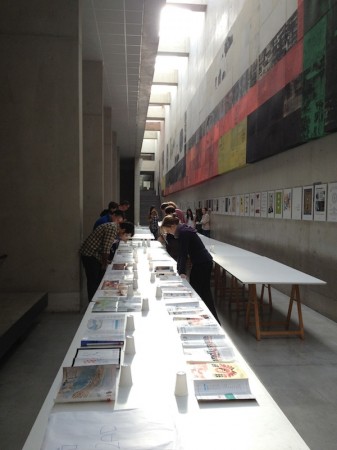
The process of judging commences on Sunday at 9am and runs through to Wednesday lunch time. That is the fixed start and end point but the commitment of hours spent judging in between these points is dictated by the progress of assessment. When you are faced with 1,513 entries split between static (about 1200) and online submissions this means most evenings finished around 8pm. It is an especially intense and demanding process. You don’t just simply ‘get through’ the volume of entries, you take the weight of responsibility that comes with judging any contest very seriously. You also identify strongly with each and every entrant, appreciating the demands and hurdles they would have gone through.
As I was on the static panel I’ll just talk about the process of judging for that side of things but I want to share a scene which captures the rather lonely isolation that comes with having to judging nearly 300 online entries (in this case Moritz and Andrew captured hard at work):
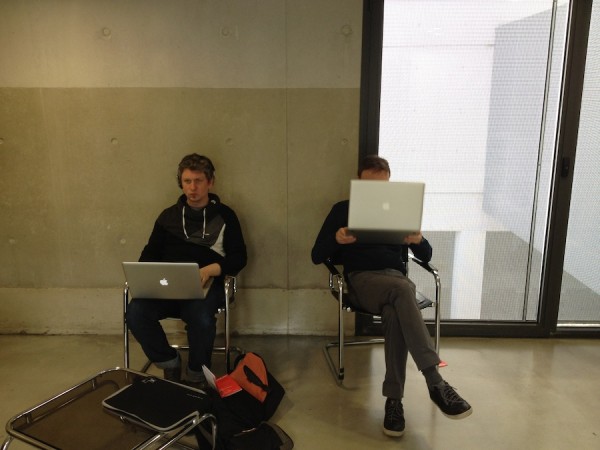
‘Fish and Chips’
The first round involves elimination. Each jury works independently to assess each submission and decide if it is of sufficient quality to go to the second round and potentially be considered for a medal. If you don’t think the piece is worthy of going through you drop a small chip/token into a slit on the underneath of an upturned plastic cup. This process gave rise to the term ‘fish and chips’. This approach allows the voting progress to be hidden and the independence of opinion is maintained. No talking or discussions are allowed and the student volunteers – whose dedication, kindness, professionalism and warmth were a wonderful added ingredient to the week – are quick to politely reprimand those who stray!
With ten members of the static panel, any pieces that received five or more votes were excluded. The exception was if there were any categories for which jury members may have a conflict of interest (ie. their publication or even their work submitted). In these cases they would be asked to leave the area and the voting threshold would be modified accordingly.
I don’t know the individual statistics but I believe around 75% of entries from round 1 were eliminated. Due to the time available and the volume required to judge it is admittedly quite an instinctive process – you can’t afford to spend too much time immersing yourself in a single piece. That’s just the way it is. Sometimes it is quick and easy, most times it is less so. You also have to remain open and fresh to the judgment of repeated graphic subjects, although that doesn’t mean you don’t occasionally find the same faces just too much to bear time and time again!
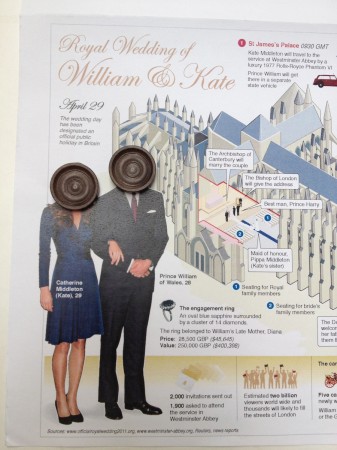
The second round switches the voting on its head. This time you drop in a chip if you believe it is worthy of a medal. Once again a similar threshold is applied and after each category is completed, those that go through to a third round are immediately considered for a medal.
Round three is the first occasion where discussion, debate and opinion exchange are allowed and encouraged. It is here where you tap into the richness of knowledge and perspective from the varied judging panel. Opinions are refined, a more considered assessment of each piece is possible and, at the end, a show-of-hands voting count is undertaken to establish the medal awarded.
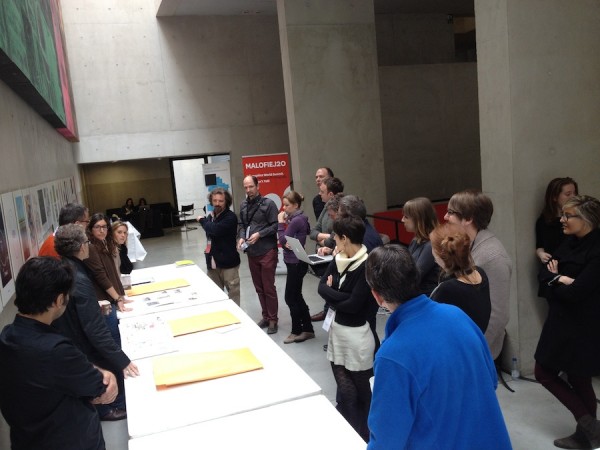
Awards
A really detailed and helpful account of the gold-winning entries are presented by Jonathon Berlin on the SND website so I won’t go into the winners nor the reasons for their awards. There is also a full list of all medallist entries on the Malofiej site.
What I want to focus on instead is something that is really important for those reading who may have had an entry judged.
Firstly, no jury member who represents an organisation whose piece is being judged takes part in any part of the voting nor even in the discussions. They are banished to a far-off corner of Pamplona and only summoned back when their input is independent.
Secondly, to achieve any sort of medal is a significant, noteworthy achievement. To secure a bronze, you need to obtain 70% of the judging vote to agree on its quality. A silver medal requires 80% and a gold 90% agreement. For any designer to pick up any medal is fantastic and there should be no sense whatsoever that anything less than a gold is a failure – a bronze or a silver medal represents a wonderful outcome and recipients should be really proud of themselves.
Firing Squad
The presentation of the winning pieces to the Summit’s delegates was perhaps the least comfortable part of the week. We were invited to announce the gold medals and best in show winners and use the platform to express the reasoning behind our selections. I have to say it was delivered in a less than satisfactory way, perhaps too organic and unstructured, and there just seemed to be an underwhelming reaction to our selections. It did feel like we were in front of a firing squad whose weapon of choice was indifferent silence.
The reason for this appears to be the continued dominance of the New York Times and, to a lesser extent, National Geographic. Focusing on the New York Times, the basic fact is this: they are the best in the business and continue to be.
Organisations must recognise that it is much harder to get to the top than it is to stay there. Once you have a winning formula, that is exactly what you have, so you stick to it. Unlocking the secrets to that formula is they key. Future success at Malofiej isn’t about other organisations copying what the NYT do, it is about emulating them. It is about learning what it is about their design editorial approach, the restraint and elegance of their visual identity, the commitment to journalistic clarity, the courage to deploy graphics across generous and treasured page space and, of course, the technical ability to churn these things out at an incredible rate. Forget how many people they have at their disposal and focus on the stream of quality these people are responsible for.
Additionally, one must remember that Gold is not the only currency in town. As I have said above, the achievements of those many organisations and individuals who secured silver and bronze medals is a wonderful outcome. It is just a shame that the focus on this presentation session is on just the individual gold medalists. I would suggest, as many others expressed independently afterwards, that we need to celebrate the achievements of these winners more openly than we currently do. The presentation session should begin with an acknowledgement of the variety of style, projects and organisations who have secured these awards so that the tip of the iceberg that is the gold medal winners doesn’t seem so narrow. I think that was the main issue at the root of the muted response.
What I cannot accept is any accusation that the jury just arrive, go through the motions, and then succumb to the big name designers and big name organisations. That is simply not the case. The integrity and quality of the individuals on that panel simply could never let that happen. It is an intensely thought over and fought over process, one which arrives at a carefully considered and crafted set of results which everyone on that panel will stand by.
Final Reflections
In my introduction I described this event as the best week of professional life. That sounds quite a lofty statement but I can’t think of any sequence of my career that has resulted in so much fun, so much inspiration, so much reward and so many new friends and contacts.
The group of people involved in the jury, especially, was a frankly brilliant collection of people: uniquely gifted, intelligent, humble, funny and unwaveringly more interested in other people than themselves. I hope this is a shared view across the team but I felt we gelled wonderfully well, the camaraderie was excellent, and everyone’s opinion was valued and treated with equal weight throughout.
Sheila Pontis (aka ‘La Presidenta’) was given the unenviable role of jury president and was a constant binding and leading force from the minute we started to the final presentation of awards at the Friday closing dinner. As an English and Spanish speaker she was absolutely key to the smooth operation of the week’s activities and everyone was so appreciative of the personal contribution Sheila made to Malofiej 20.
I could go on and on about the strength of bond within this team and pick out some highlights of my impressions from each person on the jury, but I won’t – besides I think Bryan Christie will be doing this so check his blog for updates. All I will say that I truly hope and believe we will stay friends for many years to come.
If you find yourself in the position I was last week you will be a very lucky person indeed. And, Javier, if you are reading this far down, please consider me ready and available for any future Malofiej event – thank you.
